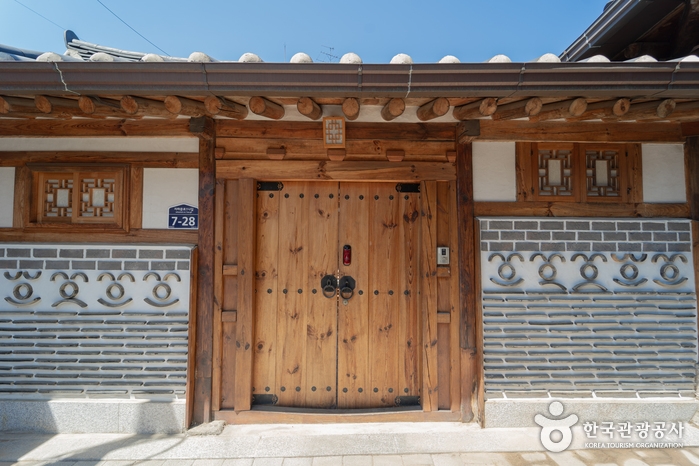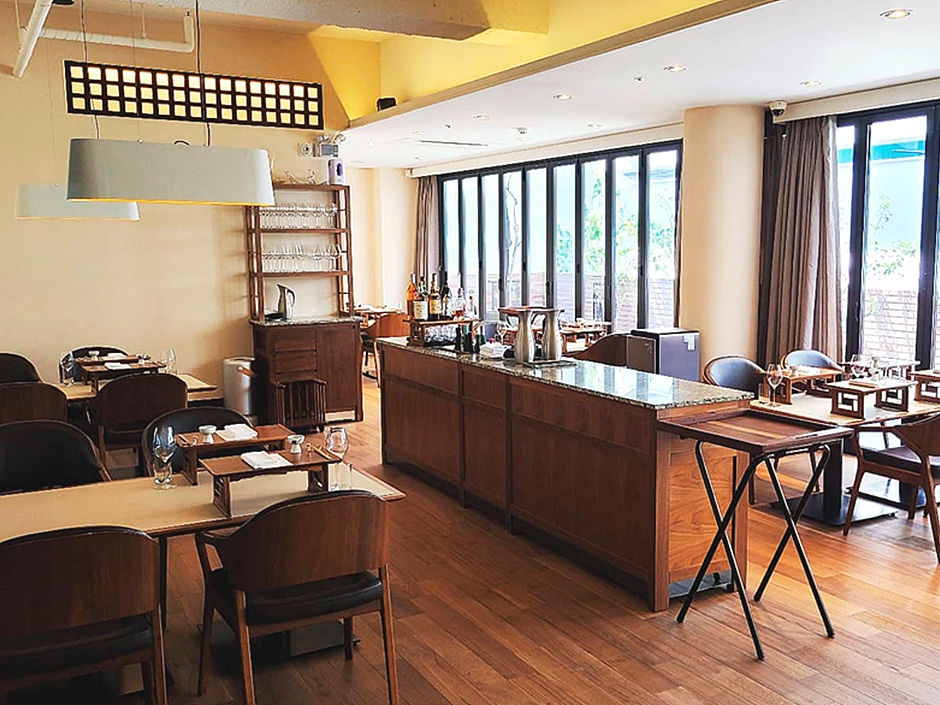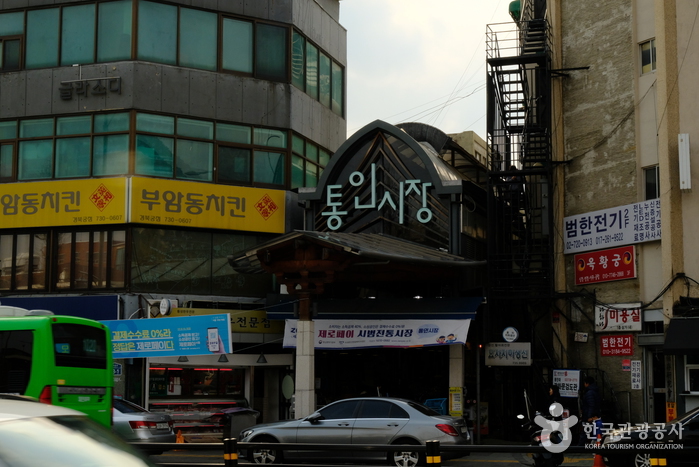Chebudong Janchijip Dwaejigalbi (체부동잔치집돼지갈비)
7.5Km 2024-03-18
24 Jahamun-ro 1-gil, Jongno-gu, Seoul
+82-2-722-3555
Chebudong Janchijip Dwaejigalbi is a restaurant where marinated pork galbi are grilled over charcoal fire. It offers various side dishes along with rich soybean paste jjigae. Enjoying cold buckwheat noodles with the tender marinated pork galbi, which are well-aged, is also recommended. Additionally, there are individual menu items such as dubu jeongol (bean curd hot pot), hoe naengmyeon (cold buckwheat noodles with raw fish), bibimbap, and gamjajeon (potato pancake).
Écru - Apgujeong Rodeo Branch [Tax Refund Shop] (에크루 압구정로데오)
7.5Km 2024-04-18
31, Dosan-daero 51-gil, Gangnam-gu, Seoul
-
CheongKwanJang - Hannam Branch [Tax Refund Shop] (정관장 한남)
7.5Km 2024-04-17
#118, 60, Hannam-daero, Yongsan-gu, Seoul
-
Seoul Hanok Stay (JNP Stay) (서울한옥스테이(jnpstay))
7.5Km 2024-10-30
7-28 , Jahamun-ro 1na-gil, Jongno-gu, Seoul
+82-10-5720-6800
Seoul Hanok Stay (JNP Stay) is a private hanok stay located 3 minutes' walking distance from Gyeongbokgung Station. You can play traditional Korean games such as jejichagi (hacky sack), yut nori (board game), and tuho (arrow-throwing) in the yard, and cooking barbecue adds to the charm of the hanok. From the yard, you can enjoy the sky view, feel the gentle breeze, and observe raindrops falling from the eaves.
Liz on with Yonsei Slimline Clinic (리즈온위드 연세슬림라인의원)
7.5Km 2025-10-23
(3rd Floor, Postam Building), 12 Seolleung-ro 153-gil, Gangnam-gu, Seoul
Liz on with Yonsei Slimline Clinic, renowned for its expertise in liposuction, has made its mark across the globe with patients from Korea, Singapore, Mongolia, Vietnam, China, Japan, France, Finland, and Australia. We (Apgujeong Dermatology Clinic and Apgujeong Rodeo Dermatology Clinic) take pride in offering more than just liposuction. Our services also include advanced laser treatments, and we ensure the use of only genuine, precisely measured doses in all procedures.
What sets us apart is our:
Warm, family-like atmosphere
Friendly, highly trained staff
Medical team with doctoral degrees, dedicated to ongoing research and innovation
Our patients particularly appreciate the expertise of Dr. Park Geon-chae, a distinguished figure in skin and obesity treatment with 25 years of experience in Apgujeong, and Dr. Park Ha-yeon.
At Liz on with Yonsei Slimline Clinic, our top priority is helping patients achieve their beauty goals while maintaining a healthy body. Our doctors are deeply committed to research, attending academic conferences regularly, and publishing papers to advance the field. This dedication has attracted doctors from around the world who come to learn from our experts.
Kwonsooksoo (권숙수)
7.5Km 2024-06-21
4F, 37 Apgujeong-ro 80-gil, Gangnam-gu, Seoul
+82-507-1354-6268
Kwonsooksoo, a distinguished Korean restaurant near Dosan Park, offers modern interpretations of traditional Korean dishes, crafted with premium ingredients from across Korea, handmade fermented sauces, and salted seafood. The restaurant's standout offering is its Lunch Course, featuring an array of dishes that include a welcome drink, an assortment of small appetizers, guemtaejjim (steamed blackthroat seaperch), mineogui (pan-fried croaker), baekhapjuk (clam porridge), and kongguksu (noodles in cold soybean soup). Additionally, options like wet aged Korean beef striploin steak and the renowned Korean beef tteokgalbi are available for an extra charge. Nearby attractions include the UNESCO World Heritage Sites of Seolleung and Jeongneung Royal Tombs, as well as COEX, adding cultural and historical context to the dining experience.
Cellup Plastic Surgery [Tax Refund Shop] (셀업성형외과)
7.5Km 2024-06-26
37, Apgujeong-ro 80-gil, Gangnam-gu, Seoul
-
Tongin Market (통인시장)
7.5Km 2025-06-19
18 Jahamun-ro 15-gil, Jongno-gu, Seoul
Tongin Market dates back to June 1941, as a public market set up for Japanese residents near the Hyoja-dong neighborhood when Korea was still under Japanese rule. After the Korean War, the nation experienced a swift rise in population, which led to a natural increase in consumption and demand. As a result the area’s street vendors and stores used the former Tongin Market area as their marketplace. Now, Tongin Market consists of 75 stores, most of which are restaurants and grocery stores. There are also some shops selling manufactured goods like underwear and shoes.

![Mods Clinic [Tax Refund Shop] (모즈의원)](http://tong.visitkorea.or.kr/cms/resource/51/3314151_image2_1.jpg)
![Écru - Apgujeong Rodeo Branch [Tax Refund Shop] (에크루 압구정로데오)](http://tong.visitkorea.or.kr/cms/resource/60/2879560_image2_1.jpg)
![CheongKwanJang - Hannam Branch [Tax Refund Shop] (정관장 한남)](http://tong.visitkorea.or.kr/cms/resource/34/2888134_image2_1.jpg)

![Whixcom [Tax Refund Shop] (휙스컴)](http://tong.visitkorea.or.kr/cms/resource/83/2878583_image2_1.jpg)

![Cellup Plastic Surgery [Tax Refund Shop] (셀업성형외과)](http://tong.visitkorea.or.kr/cms/resource/56/3313156_image2_1.jpg)

 English
English
 한국어
한국어 日本語
日本語 中文(简体)
中文(简体) Deutsch
Deutsch Français
Français Español
Español Русский
Русский